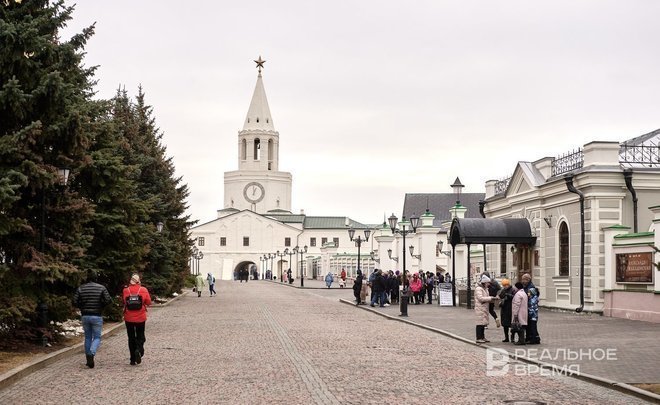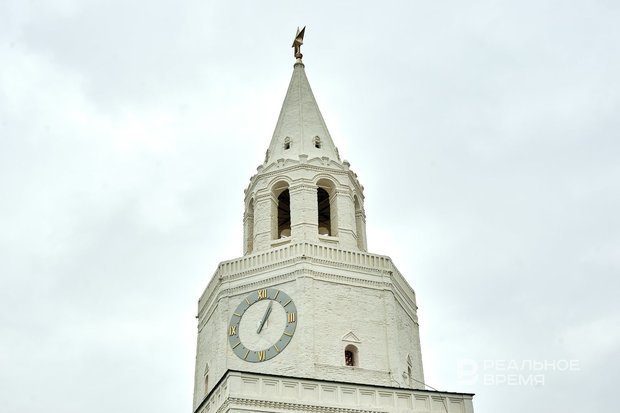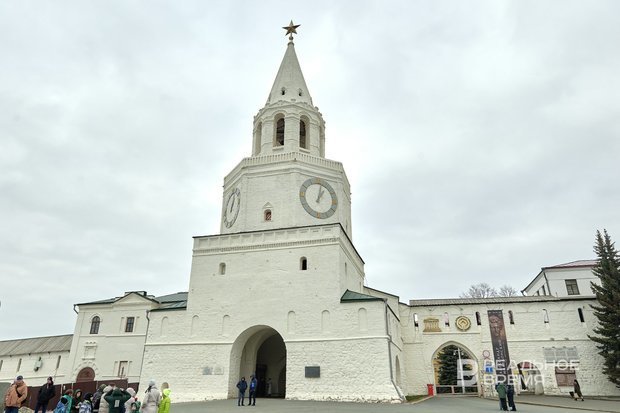New stage of restoration awaits Spasskaya Tower of Kazan Kremlin

A new stage of reconstruction awaits the Spasskaya Tower of the Kazan Kremlin, which is an object of cultural heritage of federal significance “Spasskaya Tower” and is included in the UNESCO World Heritage List. The Committee of Tatarstan for the Protection of Cultural Heritage has begun public discussions on the state historical and cultural expertise of the project documentation for further work, which will last until the beginning of April. About the assessment received by the project of SUE Tatinvestgrazhdanproekt on the reconstruction of the Spasskaya Tower — in the material of Realnoe Vremya.
The repair of the tower started back in 2021. In the spring of last year, accident-prevention works began there. The workers were to eliminate the destruction of the brickwork, deviations from the vertical of the walls of the strands in some areas, as well as eliminate cracks, subsidence of the soil and delamination of the finishing layer. Workers also removed the star from the tower — also for restoration.
The scaffolding was removed in August, and the updated star was returned at the same time. Currently, the Spasskaya Tower is not in use and is closed to tourists. Office and administrative premises have also been vacated.

Tower, church, office, warehouse
The Spasskaya Tower of the Kazan Kremlin was built by Pskov craftsmen under the leadership of Yakovlev and Shiryai in 1555-1556 from white stone and had a T-shaped passage. Soon part of the passage was laid, and it acquired an L-shaped shape. On the north side, the Gatehouse Church in the name of the Holy Mandylion of Edess was built over the passage arch, in honour of the icon of the Image of Edessa, which was copied from the banner of Ivan the Terrible. The Kremlin, which at that time ended in the area of the present Preobrazhenskaya Tower, was expanded, wooden walls began to be replaced with stone ones, this was completely done in the 17th century. As a result of the Kremlin's enlargement, the church became, in fact, part of the fortress wall with the Spasskaya Tower.
By that time, Postnik Yakovlev and Ivan Shiryai were known as the architects of St. Basil's Cathedral. Together with them, 200 of their countrymen were summoned, as well as clerk Shershen Bilibin, the elders Bogdan Kovyrin and Semyon Mizinov.
Initially, the tower was two-tiered. In the middle of the 16th century, there was a tower nearby, in which the alarm was sounded. The four-tiered tower became after the fire of 1694, when two more octahedrons of brick were put on it. The clock appeared in the 18th century, with the hands standing still, and the dial was spinning. The clock came to its usual appearance in 1780.
In 1815, the tower was once again restored, and Emperor Nicholas I, who came to Kazan, gave the church the status of a military, Kazan garrison, after which the temple was expanded so much that it became adjacent to the tower. The icon was placed on the wall of the tower from the side of the city, semicircular stairs led there. Finally, in 1905, Fyodor Malinovsky built a new tent chapel in the church.
After the revolution of 1917, the double-headed eagle disappeared from the Spasskaya Tower. Both icons of the Image of Edessa (large and small), hanging on the southern and eastern walls of the Spasskaya Tower, were also destroyed. The premises of the tower and the church were used as office offices, warehouses. The church housed a military club. In the 1930s, a direct passage through the Spasskaya Tower was punched on the site of the chapel from the southern facade. In the 1940s, the belfry on the roof of the annex was dismantled. In 1959, a clock with a 12-digit gilded dial was installed on the Spasskaya Tower, which in 1972 was replaced with a new, gray colour with four digits, which still exists today. In 1963, a gilded star with a diameter of 2,7 meters was installed on the tower.
In the middle of the 20th century, the Spasskaya Tower, like all other towers, began to be coated with lime whitewash, since lime has disinfecting properties and prevents the appearance of fungus and mold on the surfaces of the walls.

Modern usage is possible
In the course of the state historical and cultural examination, it was found out whether it was possible to adapt the Spasskaya Tower for modern use, namely: placement on the first floor of the excursion and information centre, guides' room, storage room, office space; on the second floor: administrative premises, methodical office, bathrooms; on the third floor: exposition museum premises; in the room in the tower — a seasonal exhibition space. According to the expert opinion, the proposed changes do not affect the historically established structural scheme of the object, do not violate its features that make up the subject of protection, and also do not affect the structural and other characteristics of the reliability and safety of the object. The verdict of the expertise is that the adaptation of the object of cultural heritage of federal significance “Spasskaya Tower” for modern use is possible.
The Spasskaya Tower has always been inextricably linked with the Gatehouse Church, so it was decided to fully open the doorways laid on the north side on the second floor of the first tier of the tower, thereby opening the entrance to the church. The preserved northern wall of the church is being restored. The white stone masonry of the early period of construction is preserved. As a result, authentic masonry and late laying of various construction periods will be revealed. This wall was erected in the 16th century, in the 18th century, during the expansion of the church, two openings were made. They must be preserved in the form in which they are opened, experts say. It is planned to place exhibition halls in the premises of the former Gatehouse Church and galleries.
The examination gave a positive assessment of the project documentation for the preservation of the cultural heritage object of federal significance “Spasskaya Tower”, carried out by Tatinvestgrazhdanproekt SUE. Proposals received within the framework of public discussion will be published no later than April 19.
Tatinvestgrazhdanproject informed Realnoe Vremya that there are no exact dates for the start of the new stage of reconstruction.